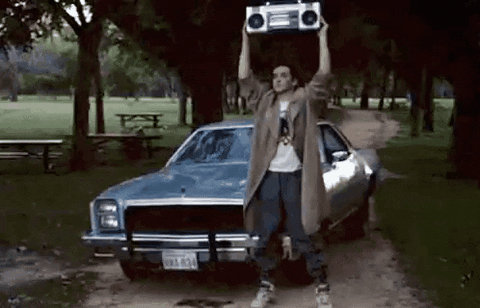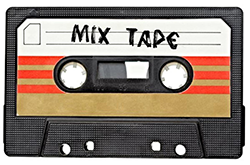What works to engage people with how you market your writing and creative work? Engaging with someone on an emotional level. Today I want to explore what that means, why it works, and share some examples.
Too often, I find that people don’t find success with their marketing because they are far too vague and don’t communicate to people as… well… people. For instance, it’s common for me to see a writer encouraging people to sign up for their email newsletter with a phrase such as:
“Sign up for updates.”
Then the next line isn’t any more clear: “Receive occasional updates from me on what I’m working on, tips, and news.”
They are focusing on the “what” of what a subscriber will receive, instead of how it will make them feel. What if they instead focused on the emotions that would draw in a reader? This would differ based on what the newsletter was about, and who the ideal subscriber is. But let’s just say this is a memoir author who writes about family history and identity. The newsletter sign up text could instead be something like:
Join me in my weekly newsletter where I share inspirational stories from those who found powerful ways to come to terms with who they are and how they connect with their family history. I often share genealogy research that may surprise you, and I take you inside my own process for finally being able to say ‘this is who I am.’
What are the emotions that this could stir up in a potential subscriber? To be inspired, surprised, validated, and connected. If you are on this author’s website because you liked anything about them and their book, well this could all be very compelling.
Let’s look at another example. Last week I wrote about how a local historic movie theater was torn down. I intentionally tried to bring people and emotion to the forefront in that essay. There are people in the photos I shared, and I ended it with a photo of myself and a brick because I wanted to compare the building that was torn down to our my own mortality and creative process.
What more could I have done? I could have given it a more emotional headline. I called it “This brick” to cause a bit of curiosity. I figured that it’s a pretty random subject line for an email, so it may get someone’s attention. They could see it and think: “Um, a brick? You are sending me an email about a specific brick? What’s up Dan?” In the essay, the brick itself is a narrative device I used to symbolize a much larger theme.
But I could have gone a different route to engage people emotionally with the headline:
“This made me cry.”
Or
“It’s gone and I’m sad.”
Or
“I never thought this would happen, but it did.”
These would focus on the feeling of loss, and may cause a different kind of curiosity with the reader. Honestly, I could sit here and write out two dozen other headlines for that essay, and probably come up with many that are far better than “This brick” because they engage people in more compelling emotional ways. That is the beauty of all of this, how creativity and marketing can be subjective.
Of course, you see emotions used in marketing all over the web and social media. This is why you see people use lots of emojis in social media updates: a glass of wine emoji, a dancing woman, hands being raised, and so many others. They are meant to evoke a feeling in a way that is different from just writing words. It’s subtle, but there is a difference between writing this on social media:
Going dancing for the first time in over a year!
and sharing it with emojis:
Going dancing for the first time in a year! 
Why? Because the visual dimension can trigger emotions in a different way. That is also why you see a lot of animated gifs used as reactions in social media. Because sometimes a gif like this says an emotion better than words can:

Infusing emotions in how you share can also radically shift the tone. It’s more common for me to see a writer celebrate something online, but also pairing it with a dose of reality. This is not only more authentic, and shares a wider range of their own emotions, but can trigger different feelings in the reader. For instance, consider the difference between these two social media updates:
“Wow! My book won the BLANK PRIZE FOR BOOKS! I’m so excited!”
vs.
“Wow! My book won the BLANK PRIZE FOR BOOKS! I’m so excited! But I also broke down crying after I heard the news. This book took everything out of me to write. There were so many — sooooo many — days where I could barely hold it together. Where it felt like the book was never going to get written, that I just didn’t have it in me. To have the book be recognized like this, I just, don’t even have the words. Thank you all for your incredible support. It means the world to me.”
There are of course an infinite amount of permutations of this that play into different emotions. Another version of this post could have been:
“Wow! My book won the BLANK PRIZE FOR BOOKS! I’m so excited! Oh, and here is a photo of the ice cream I spilled on my shirt as I heard the news, because YES, I was eating an entire pint of ice cream at 8am. :\”
These are all honest in different ways, and can change the way you connect with your readers.
Is marketing about trying to get attention? Sure. But I want to encourage you to consider how that attention gets focused on someone’s emotions. To consider your ideal readers and what draws them in. What makes them feel connected to a story or the person who writes it. What they want to be a part of. What makes them laugh. What makes them feel that their identity matters.
This can easily relate to a traditional book launch as well. Not long ago I was brainstorming what kind of gift to include with an advance reader copy of a book that this author was sending to people. The idea was to get their attention, give them a little gift — something that may even encourage them to take a photo and share it on Instagram. One item I suggested was an audio cassette tape. “What if you sent them a mix tape of songs from the era that your memoir is set in?”

Can you imagine receiving this in the mail with a book? It’s not about how useful it is, it is about the emotion. That it may connect with a sentimental memory, the feeling that mix tapes are personal gifts that were once shared between friends. Or it could just make the person smile for a moment because it is totally unexpected.
However you share what you create, if your goal is to connect with someone and get their attention, consider what not only surprises them, but may evoke a certain kind of emotion.
Thanks!
-Dan
